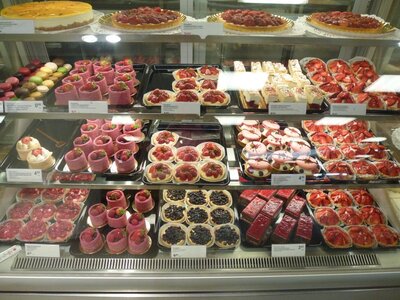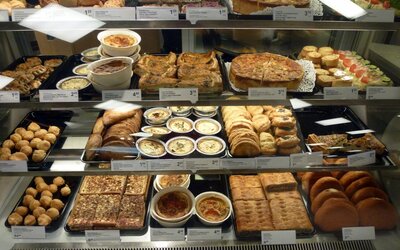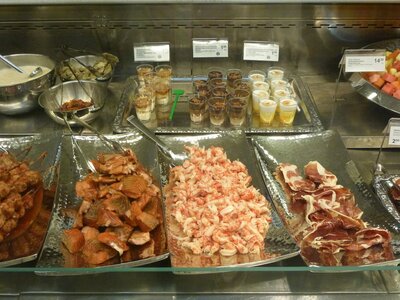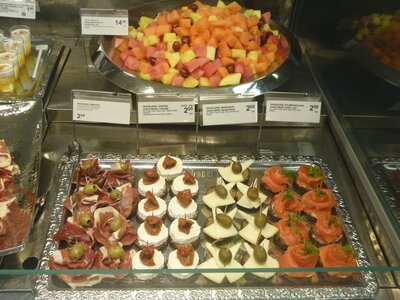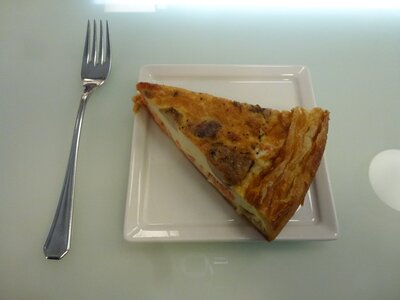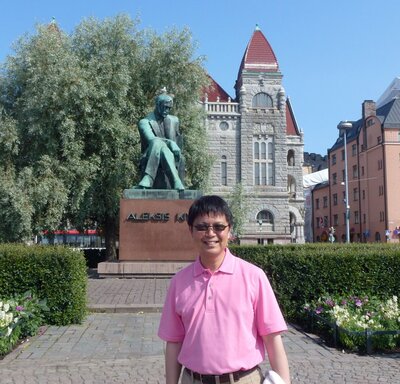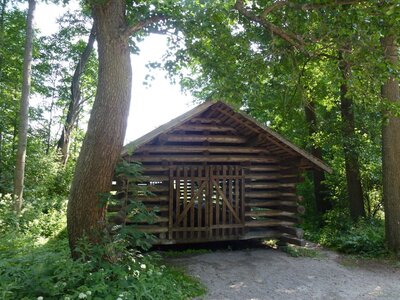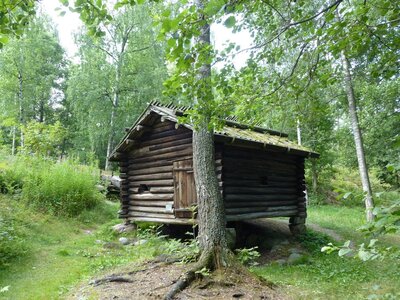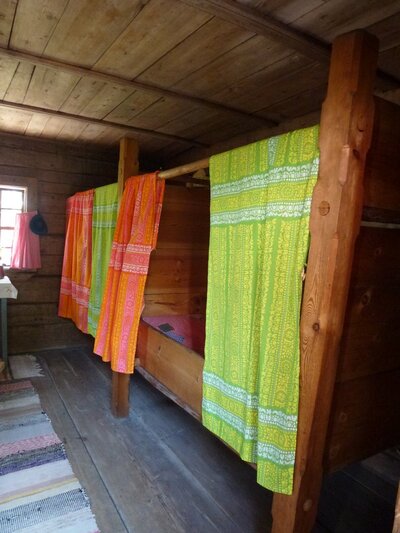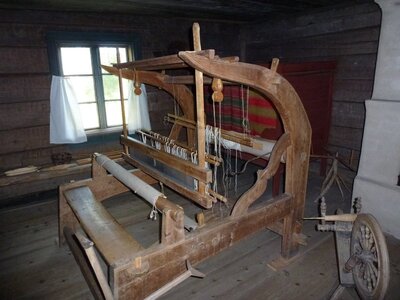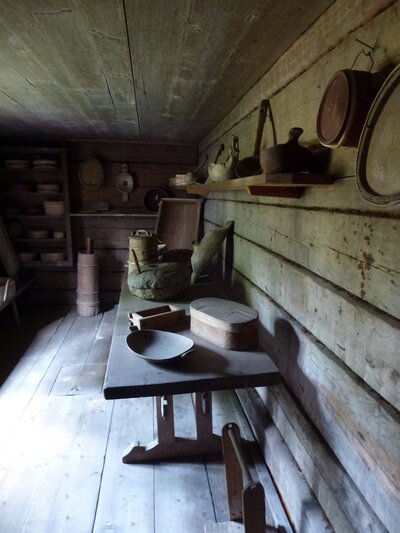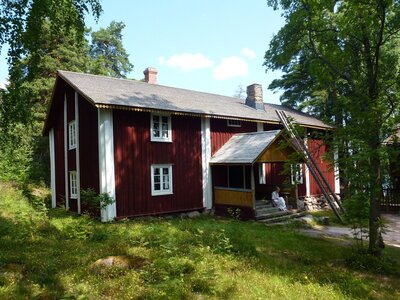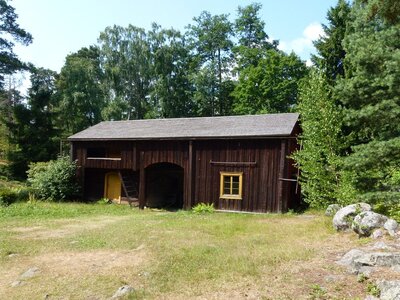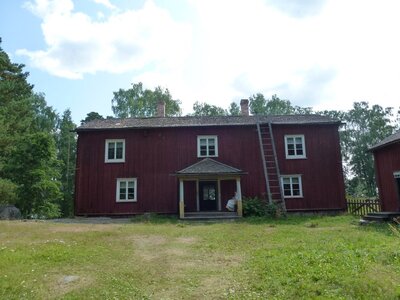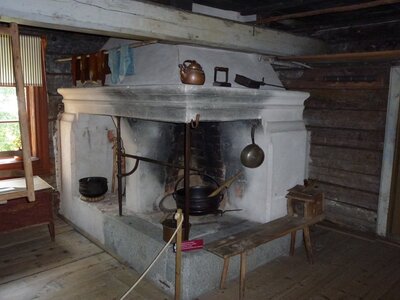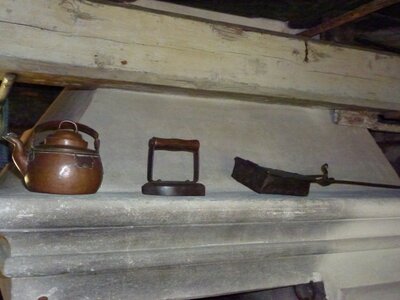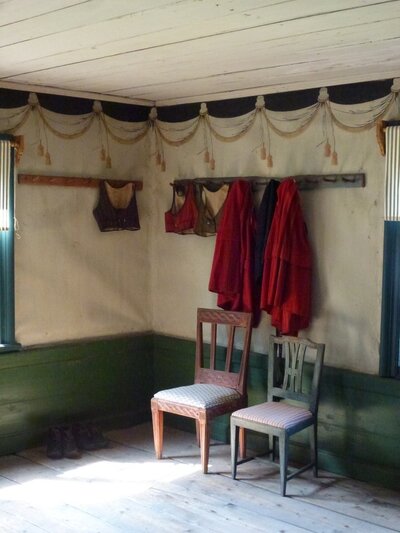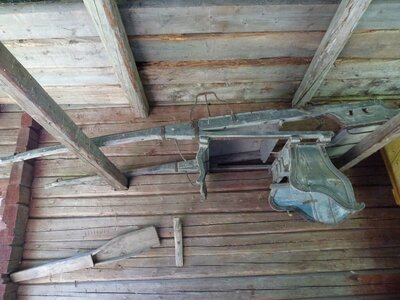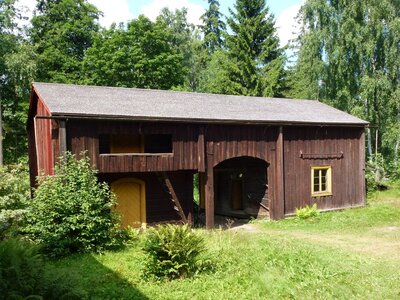Breakfast at Stockmann and the Seurasaari Open Air Museum
For the second day that we had the Helsinki Card, we planned on visiting the Seurasaari Open Air Museum. Since breakfast was not included with our room at the Holiday Inn Helsinki City Center, we decided to visit the Sockmann Department Store and Supermarket to begin our day. Luckily for us, there were lots of good food in Stockmann for us to choose from without breaking the bank.
Who can resist the variety? I know I couldn't. If there is one thing I love about Europe, it is its pastries. In San Francisco, we have some too but boy how expensive they are. I knew I had to take advantage.
For breakfast that morning, we chose some quiche slices. I had some with olives and ham while Marc had one with salmon.
The lady at the counter heated the food for us and gave us some white porcelain plates so we could eat at the neon lit tables nearby. It was so nice eating there. Locals ate there too. One lady even had red wine to go with her breakfast.
If ever you find yourself in very expensive Helsinki and want to save some money, go to Stockmann. I simply followed one world traveler's advice and it was heaven sent.
If I recall correctly, Marc and I took the bus to go to the Seurasaari Open Air Museum. It was quite a ways and definitely not walking distance from the city center. It turned out just fine since we passed by the Sibelius Park, another must see attraction in Helsinki. We stopped there after our visit to Seurasaari.
It was very early when we arrived at Seurasaari and we must have been some of the very first visitors there at that time. Anyway, I don't think the museum would have felt crowded and sufffocating given its huge area. We spent a long time, at least three hours, touring its attractions. There were so many houses and buildings from all over Finland which were dismantled and rebuilt specifically for the attraction.
The tar boat is actually inside the wooden hut. The boat was called Tar mainly because it transported tar from one Finnish town named Kainuu to another called Oulu. The boar carried 25 tar barrels and a crew of three.
It is not so visible here in this picture, but there was a trough behind it. It was put to use during the spring floods as early as the 1900s.
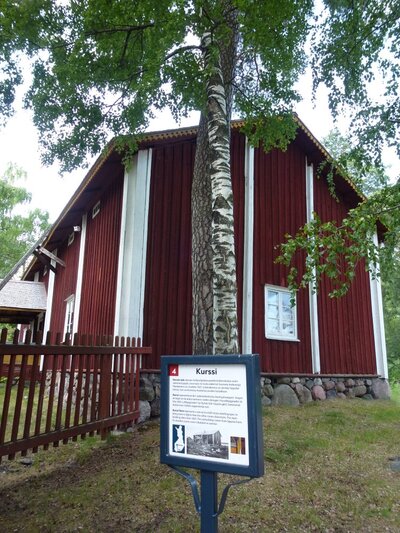
The Kurssi. It was basically a house where one family lived. It was not very big and all it had inside was a kitchen, a dining table, and some very short bunk beds. I already knew why the beds at that time were short. People centuries ago in Europe slept mostly in a sitting position for religious reasons. I also know that sleeping all outstretched like we do today was a definite no no for them as it seemed like dying.
Most wooden dwellings at Seurasaari had guides dressed in period clothing. They accompanied visitors and answered any of our questions, if w ehad any.
It was said that the master's brother lived here in the summer. The picture above shows the daughters' room.
How difficult it must have been to have to weave the cloth to make your own clothes with. I sure am glad I can just go to a department store and choose the clothes I want.
Per my understanding, an IVARS was sort of a hotel or an inn back in the olden days in Norway. It only had a room or two for guests. Definitely not like the the Holiday Inn or Marriott Hotel we have today.
